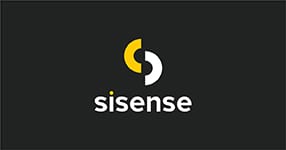
While the importance of analytics to drive better data-driven decisions and the economy is well known, why is adoption still low? On one side, technology trends like data visualisation, self-service, the cloud and even the term ‘business intelligence’ have become ingrained in organisations. Despite this, insights from business data continue to be out of reach for most people. Data remains ‘stuck’ in dashboards, reports never leave IT departments, and insights stay with analysts.
Simple insights, actionable decisions
Traditionally, the approach has been to focus on technology to make analytics faster, more visual and accessible anywhere from any device. But now, we can move dashboards to the cloud, animate charts, and make it simple for anybody to query a database. The truth is that to the business user, most of that still sounds like a distraction.
What business users want are insights that will help them make smarter decisions. They would rather have answers where and when they think of a question, without leaving their flow of work and open yet another application. The key is to provide business users with evidenced recommendations that they can act on. Analytics is the technology that can make that possible, but we must remind ourselves that analytics itself isn’t the point. Like the best technology, analytics is at its best when it becomes invisible.
Invisible Analytics: Consumer apps leading the way?
Today, very few of the most innovative consumer companies actually discuss data and analytics. This doesn’t mean analytics isn’t important; rather, these companies choose to show off the experiences that analytics can enable.
Music streaming services, for example, don’t advertise dashboards with our listening habits; they simply provide personalised insights and recommendations based on our listening history. They also do this automatically where and when we want the insights in the app and often when we open it.
We can also look at mapping applications, which despite using data and AI, don’t ask us to sign in to a portal and study charts to optimise our travel times. Instead, they take our location, desired travel distance, and traffic patterns to help us reach our destination on time.
Our fitness trackers do something similar. They use algorithms to alert us when we’re behind our average movement for the day. They also suggest other activities to meet our fitness goals.
In short, consumer companies help everybody make smarter decisions and live healthier lives. They do this without mentioning terms like analytics, dashboards or self-service. The insights are simply there when we need them, where we need them, in the apps we’re already using.
Keeping focus on analytics in the age of application overload
The rise in remote work due to Covid-19 has also increased the number of business applications that business workers must use every day. Identity-management company Okta reports that the average customer in 2020 used 88 apps, with many customers reaching almost 200 apps. Gartner expects our reliance on workspace collaboration apps to increase in the coming years, becoming “virtual water coolers” for a distributed workforce.
Interestingly in the UK, reports show apps by British App publishers have an average of 172.47k downloads. Overall they get more downloads than the average of all apps, which is 194.81k.
In a world with so many apps vying for our attention, it’s critical that business workers focus on their workflows without distractions. This includes having to deviate to dedicated analytics apps or stand-alone dashboards to answer a data-related question. Instead, people need answers to their questions in the apps they’re already using. As in the consumer world, analytics should be like a spice, infusing insights into business users’ current workflows.
Imagine a CRM that shows a sales rep which customers to reach out to or which leads require follow-up. Even better, what if the CRM automatically notified a rep that they’re behind or ahead of their revenue targets? Both experiences lead to smarter business decisions and are made possible by analytics without the sales rep even knowing it.
When we view analytics this way, there are limitless other potential examples. Participants in Slack or Microsoft Teams can pull up relevant charts in the channels themselves without moving the discussion away from the chat. Executives can seamlessly insert insights and charts directly into presentations at the click of a button — no analyst needed. Developers can infuse custom applications with KPIs, usage analytics and other automatic recommendations.
In this type of world, business workers are in and out of their apps and barely aware that they’re using analytics at all. They’re simply getting the answers they need, making smarter decisions and moving on to the next task.
Accessible data, invisible analytics
Building this dream world of analytics will require us to rethink our focus on analytics. Like consumer companies, ”
Technology is important, of course, as is how we will reach that goal. Recent advancements in AI mean we can scan and get insights from the largest of data warehouses in seconds. Data visualisation has made data more understandable. Moving to the cloud has enabled us to access data from anywhere in the world.
Today, extensible frameworks mean we can embed analytics into any app, infusing them with digestible insights and finally putting data into the hands of business users. “Let’s look at the data” will become a phrase of the past. The data will already be where business workers want it, when they want it, without them asking for it. They will have their insights, they will make the required decisions and then they will move on.
Analytics will become invisible, and the everyday worker will become smarter without even knowing it.

























